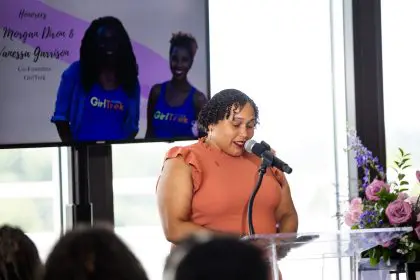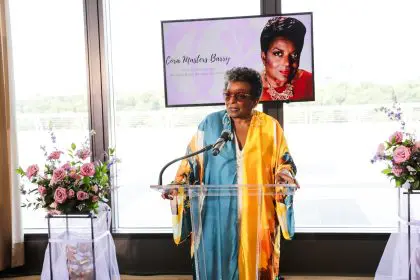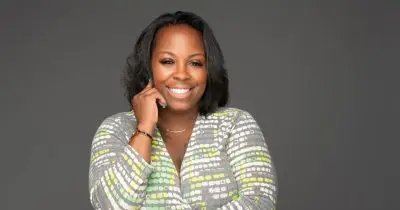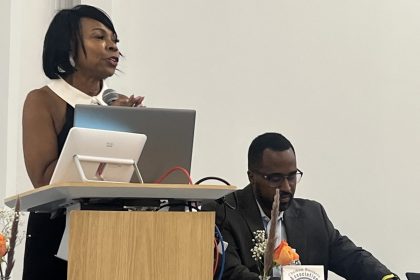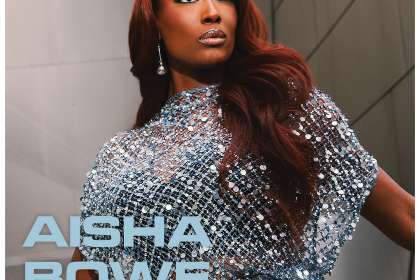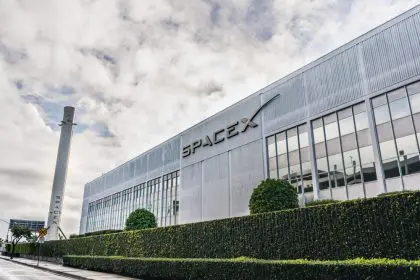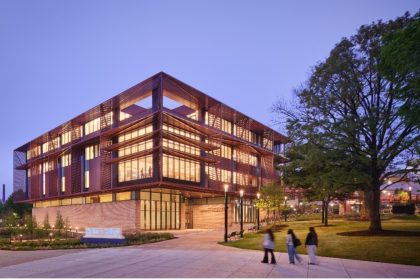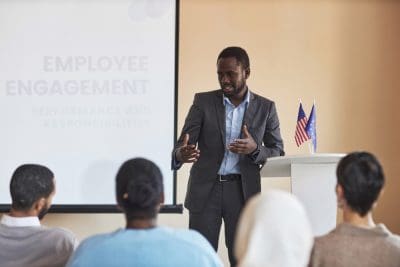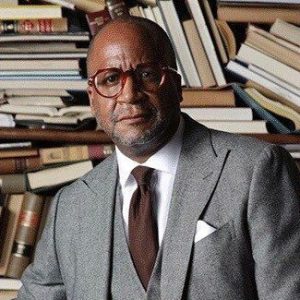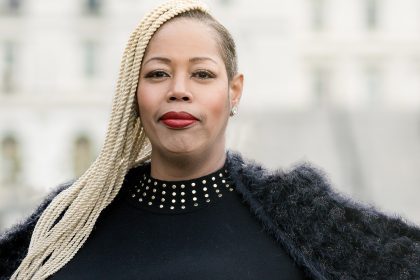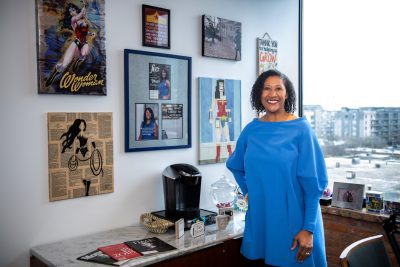Joan Higginbotham, a Chicago native, initially didn’t envision using her electrical engineering skills in the aerospace industry. However, her perspective shifted dramatically when she encountered a space shuttle and the launch pads, which looked like something straight out of Star Wars. This encounter ignited a passion for space exploration that would shape her career.
Just two weeks after graduating college, she began her career as a rocket scientist at the NASA Kennedy Space Center in Florida, working on the shuttles’ electrical systems. She held several positions, including working in the firing room — the launch control “nerve center” during the shuttle countdown and liftoff, supporting 53 launches during her nine-year tenure.
Higginbotham’s journey to becoming an astronaut was not without its challenges. After an unsuccessful attempt in 1994, she was selected as an astronaut candidate in 1996. Her 20-year NASA career, marked by resilience and determination, culminated with a 13-day mission onboard STS-116, where she operated the space station remote manipulator system (AKA the robotic arm) to continue building the International Space Station 250 miles above Earth.
Higginbotham’s commitment to making a difference extended beyond her work in the space industry. She expanded her skillset to tackle challenges in the corporate social responsibility arena. Her role focused on partnering with organizations to build affordable housing, providing extensive repairs to existing dwellings, and significantly impacting education through scholarships. She also managed a malaria control project in Equatorial Guinea in Africa, demonstrating her dedication to improving lives.
After gaining 35 years of experience with the federal government and several Fortune 100 companies, Higginbotham launched her aerospace consulting firm, Joan Higginbotham Ad Astra LLC. As president and CEO, Higginbotham provides technical expertise to businesses in the aerospace sector. Among her recent accomplishments was NASA awarding Blue Origin a $3.4 billion contract to develop and fly a lunar lander to the moon’s surface.
Higginbotham serves on the board of directors of the National Aeronautics Association, the Astronaut Scholarship Foundation, and the advisory board of the Space Telescope Institute Council. She is a member of Delta Sigma Theta Sorority Inc., The Links Incorporated, and the BOW Collective.
Higginbotham has received numerous awards, including the World Who’s Who of Women, Charlotte’s 50 Most Influential Women, the NASA Exceptional Service Medal, and Savoy’s 2012 Top Influential Women in Corporate America. She also appeared in Alicia Keys’ “Superwoman“ video.
She has been conferred with an honorary doctorate in aerospace science from Southern Illinois University at Carbondale, her alma mater, and an honorary doctorate in humanities from the University of New Orleans.
Higginbotham is married to the Honorable James E. Mitchell, Jr., a city council at-large representative in Charlotte, North Carolina.
[Editor’s note: This is an extended transcription. Some errors may occur.]
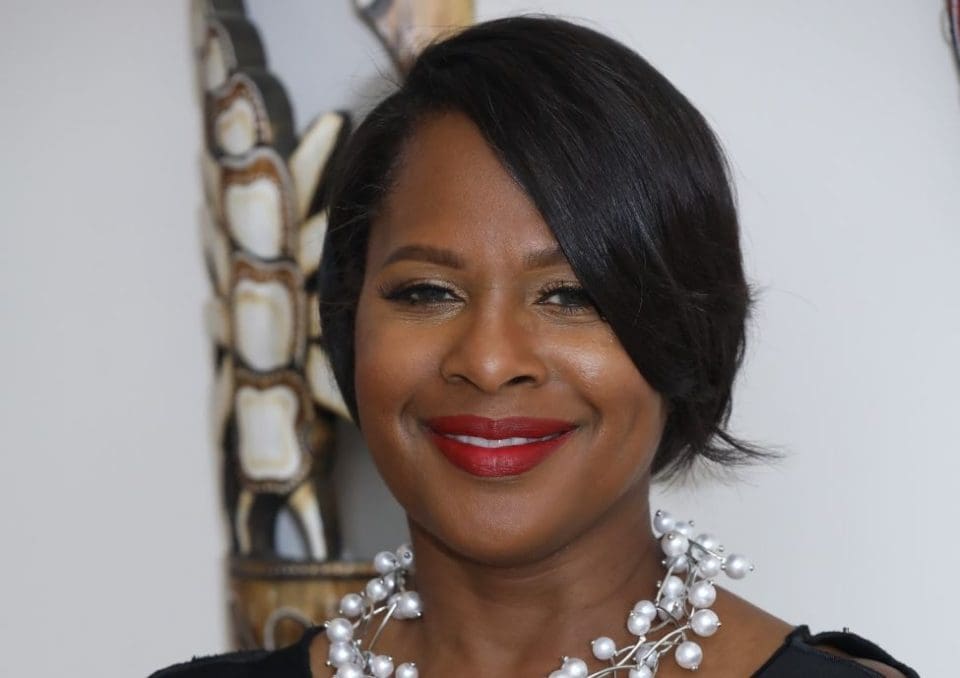
Munson Steed: Hey, everybody! This is Munson Steed, and welcome to Sisters with Superpowers, where we introduce you to those sisters who have powers beyond our imagination and have gone places very few have and will ever go. I am so proud to, and this is one of those da-da-da where you like, bring out the band, have the whole marching band. But, my dear sister, Joan Higginbotham, how are you?
Joan Higginbotham: I am wonderful. I hope you are.
MS: I am fantastic. Congratulations. Truly, I am very proud of you. Let’s get right to it. You are a sister with superpowers. You are in a club that we will always say is very small for those sisters so far, but I’m sure the numbers are gonna increase. Can you share with our audience the places and the spaces you have gone, and let them know just how far you’ve gone away from this world?
JH: Absolutely. On October 9, [I took an] absolutely fabulous, magical journey to space [for] 13 days. It was really phenomenal. I became the third African American woman to go into space. As you said, it is kind of a very small sorority, if you will, to date. We’ve had five African American women go to space and we’re looking to make that so much greater so that number will not mean anything anymore because there have been so many of us that have gone to space that it’s more the norm than it is the exception.
MS: When you think about your lifetime and the things that have inspired you, just this group that moves community, moves mountains, gives access, which is so important, INROADS. How did INROADS make a difference in your life and career, given that you’ve now gone to space?
JH: So it was interesting, because when I was young I always loved math and science, but I really didn’t figure out, or I didn’t know what to do with it, when I got to the real world. And it was through INROADS that I was introduced to the world of engineering, which the foundation of which is math and science. And so, it was through INROADS that I learned that I could take this love of mine for math and science and parlay it into a lifelong career. So, that’s how INROADS basically impacted me. It got me started on the path to my career.
MS: When you think about that, what did you see in going and being an engineer that you would share with someone else who might not be in their journey but starting their journey? What should they see? And how would you suggest you would talk to yourself at 20, or talk to them at 21 at a graduation?
JH: Sure there are just so many things I talked to either myself at 20 or someone else at 20, 21, and some of them are personal, and some of them are professional. So, on the professional side, I would say always be a life learner, especially if you’re going to be in the technology field because technology is always changing, and you need to stay current. Otherwise, you will become irrelevant. The other thing from a professional standpoint is that even though you may be young in your career, have the courage to speak up in the room.
You may be one of few, or the only in the room, and that’s okay. But you’re in that room for a reason, and have the courage to speak up, because sometimes it is that lone voice in the room that you don’t hear, that you absolutely need to hear. On the personal side, I would say always be very mindful of yourself and take care of yourself from a personal, mental, and physical standpoint; that’s very important.
The other thing I would say, and this probably crosses over into both professional and personal, but nourish those relationships. There are people in your life that have helped you get to certain place. Be thankful for those people, show that your appreciation and be that person for someone else. And you also need those relationships when you’re in your career. So, always make sure that you’re talking with people, not only your peers, but people that are higher than you, and people who may be younger than you in your career.
MS: When you think back in that context, what teacher or mentor comes to mind that really made a difference in who and what you are today?
JH: Yeah, there are two teachers that I can think of. One of them is Melanie Wojolevitz. We used to call her Miss Wojo, not just for the INROADS, but also my teacher at Whitney M. High School, where I went to school, and she was my biology teacher, if I didn’t say that. And then, it was Miss Takakawa who was my chemistry teacher, and these women were very confident. They were self-assured in their abilities to teach, and they really cared about the students, and it’s not that they did something overt.
It was just the way they carried themselves and the way they cared for others, and that made such an impact on me that many years later, when I was compiling my list of people to come watch me launch in the shuttle. I thought of them, although I hadn’t spoken with either one of them for probably 20 years. But that’s how much of an impact they made on me.
MS: I love that. Inspiration, it can come from wherever. But for you? Where do you draw inspiration from?
JH: Many places. From my family, who have always been just wonderful advocates for me, and very supportive of me. From my friends, I always have a really good group of supported friends who are there to pick me up when I need a little pickup and kinda give me a little swift kick in the tush when I need that as well. And I also draw inspiration from people that I may not know, but who have overcome obstacles to accomplish something in their lives, that’s always incredibly inspirational to me. And then, there’s a little inner drive in me that inspires me and motivates me as well.
MS: That inner drive speaks to leaving your mark. You have definitely touched the stars. How do you imagine leaving your mark? You’re still really young. What do you plan to do?
JH: Well, thank you for that. Not quite as young as I look. But I’d like to think that I’ve left a mark on the space industry by becoming one of the few African American women. As I mentioned earlier, there are five African American women who have become astronauts for NASA, and there’s one private African American woman who has gone in space. And I think we have each left our mark on the industry. But I hope that, like the women who’ve come before me, I have made this path a little easier for those who are coming behind me, because this is still not an easy journey to navigate.
MS: Just a question, as it relates to Sisters with Superpowers. What are two of your superpowers?
JH: I would like to think one of my biggest superpowers is empathy. And I’d like to think that my other superpower is determination/stubbornness.
MS: The value of empathy as a sister with superpowers. How do you apply it in your day-to-day life? And how should others understand that it is a power to be empathetic, as we move through and around our team of people in our job, in our life, empathy as a power?
JH: So, I think empathy is the one thing that separates us from human versus non-human. I think there’s a bit of empathy in just about everyone, or at least it should be. And the way that manifests itself is that I try to put myself in other people’s shoes. You never know what people are going through on a day-to-day basis. So, sometimes you just have to show them a little mercy and grace. And sometimes that may be hard to do but you just really have to reach deep down inside and say. Maybe this person is going through something, and maybe I need to find out what it is and show them a little mercy.
A little kindness instead of being a little brash, it’s easy to be cynical but it takes a little more grit and gumption, and time, If I’m being frank, to be empathetic to other people.
MS: Congratulations on making it to space. A beautiful place, [it] seems. But when you think about curiosity, how has curiosity played a role in how you approach what you do and the endeavors that you’ve literally reached the stars being able to get there?
JH: So, curiosity is probably one thing that got me started on my journey to engineering. My brother had a transistor radio and I opened the back of it, and there was this motherboard. I didn’t know what it was at the time. It’s just this board with all these wires and these things on them. And I was like, Hey, what will happen if I cut this one? So I did. So obviously, that did not go well for me, but they kind of spurred my prowess in engineering. I got a little better at the engineering thing, I didn’t cut wires.
But that curiosity has kept me. Oh, I say, I kept my thinking fresh. It has inspired me to try new things and encourage other people to try new things, and it has ultimately led me to space. Because I was curious about, can I become an astronaut? What do astronauts do all that kind of stuff? So curiosity really keeps me, I think, relevant in the technology sector and it’s always fun to imagine what other things you can do if you put your mind to it.
MS: It’s beautiful to imagine, but this is more of an industry question because many of us don’t get the opportunity to walk or see the vision that you’ve had. But how will it being or being creating industries? And obviously you’re setting up shop in space. How will that forge a new world for those who don’t know, being in a situation, a state of no gravity, and plus plus plus all the things that you know? How will that forge a new world?
JH: Well, it will forge a new world, because it’s something totally different from what we do now. There’s similarities, and there’s some differences. But as we look to, I hate to use the word colonize, but as we look to have a permanent presence on another planet, such as the moon. It will take a little bit of everybody. It will take engineers. It will take designers. It will take artists.
It’s not just for technical people. We have to figure out how we’re going to farm and how we’re going to make food. So, it’s going to open up a plethora of opportunities for every different type of person there is because we’re going to need all these different minds and skill sets so that we can live on a planet other than Earth. So, it’s going to be, hopefully, a beautiful place to be.
MS: I love it. Two last questions. One is the role of AI. It is happening. How will it help us as we move towards space and really need an assistant that can’t always be a human as you move through space?
JH: So I will say this: space has always been a place where you need humans. Where you have needed humans and needed machines, robotic arms. So, I was the robotic arm operator on my flight. And people say, “Well, why don’t we just send robots?” Because sometimes you need people to think. And robots, although you have the AI coming, you need the people to put the information in there, so the AI can digest it. So, it’s gonna be a place where I think humans and robots and AI are all going to play together and be very complementary. I don’t think it’s a need one. It’s not a silo thing. It’s something that it’s gonna be, have to be a collaboration for it to work and for it to work well.
MS: Great. I appreciate that. Lastly, if you were given a speech at a Morehouse or Spelman and you were gonna challenge the next group of INROADS graduates, what would the title of your speech be? And what would the three things that you would challenge them to do?
JH: So, the name of my speech would be “Finding Your It. And by that, I mean finding it. What is it that sparks that desire in you that’s going to be your career, and that’s going to be something you are passionate about, and you are not going to view as work? You are going to view it as something you love, because you have found it. The other thing I would challenge them to do is to be a lifelong learner. And the third thing I would challenge them to do is to be kind to their fellow man because the one thing I’ve learned about going to space is that there is always space for humanity.
MS: Hey, everybody! This is Munson Steed. I have been so pleased to hang out with my dear sister, Joan Higginbotham, and we really love what you do. Congratulations on your recognition at INROADS, but more than anything, thank you for being an example, and lighting a path into the universe with endless possibilities on how much we can accomplish if we put our minds to real sisters with superpowers. My dear sister, Astronaut Joan Higginbotham. Thank you so much.
JH: Thank you, Munson, for having me.
MS: Thank you.

